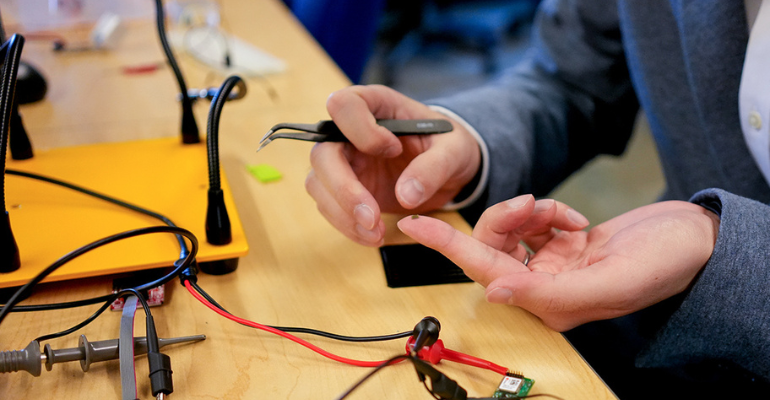Combining AI and Microelectronics to Make a Better Brain Implant
Researchers at the University of Toronto is working with AI and microelectronics to make neural implants safer and smarter, the University of Toronto reported.
Xilin Liu’s team integrates neural implants into miniature silicon chips by employing the same process for making chips used in computers and smartphones. This technology, referred to as complementary metal-oxide semiconductor (CMOS), allows them to reduce the device’s physical dimensions and power consumption, thus minimizing the risks associated with the implant’s initial surgical procedure and long-term use. Liu is an assistant professor in n Assistant Professor in the Edward S. Rogers Sr. Department of Electrical & Computer Engineering at the University of Toronto.
“Neurons talk to each other in part via electrical signals, and a therapeutic neural implant produces electrical stimulation – like a pacemaker for the brain,” Liu said.
Liu is part of the neurotechnology centre CRANIA, a collaboration between the University of Toronto and the University Health Network that brings together electrical and computer engineers alongside neuroscientists, data and material scientists and clinicians. Together, they research ways to improve brain health and chart alternative treatment paths, especially for those who don’t respond well to current medications.
In a recent project, Liu and his team sought to leverage the power of AI to maximize the implants’ clinical efficacy and minimize the adverse effects of excessive stimulation.

Xilin Liu holds a prototype of a neural implant chip, 3 millimetres by 3 millimetres, on the tip of his finger.
The team turned to deep learning (DL) algorithms, which proved to be especially powerful at identifying hidden biomarkers often neglected in conventional approaches and they outperformed conventional algorithms when detecting the optimal timing.
“Most existing implants produce electrical stimulation at a constant rate, regardless of the patient’s condition,” Liu said. “With DL, we can activate the neural implants at the optimal time and only when necessary.”
However, the high computational cost of deep learning models makes it a challenge to integrate, especially considering that it’s essential that all processing runs locally in the implants.
“The cloud would provide more processing power, but you can’t have an implant fail because it loses telecommunication service – when a patient goes into an elevator or airplane, for example,” Liu said.
To reduce this computational cost, the researchers developed techniques for training and optimizing the models for each patient’s condition. A recent case study showed that detection of epileptic seizures by deep learning in low-power neural implants was comparable to state-of-the-art algorithms that run in high-performance computers. This work was published in 2021 in the Journal of Neural Engineering.
Liu said his team’s technology can be used in a broad range of clinical applications beyond epilepsy.
Article source: MDDI










